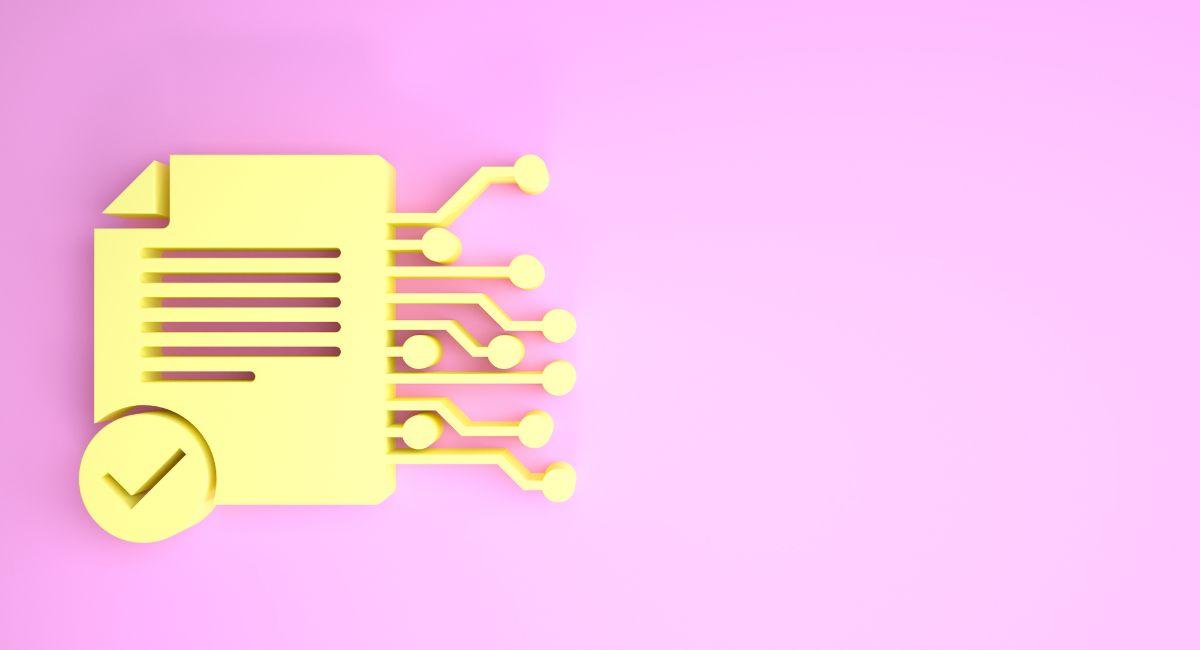Top 8 Web3 Trends That Are Affecting Smart Contracts Deployment

As the decentralized landscape continues to evolve, the integration of Web3 technologies is reshaping the way smart contracts are deployed and utilized. Web3 represents the next phase of the internet, emphasizing decentralization, interoperability, and user empowerment. In this article, we explore the profound impact of Web3 trends on smart contracts deployment, unveiling the transformative possibilities and challenges that arise in this dynamic environment.
Top 10 Web3 Trends Shaping the Decentralized Landscape

Web3, the next evolutionary phase of the internet, is bringing about a paradigm shift toward decentralization, trustlessness, and user empowerment. As blockchain technologies mature and gain widespread adoption, several trends within the Web3 ecosystem have emerged, shaping the future of decentralized applications and services. In this comprehensive exploration, we delve into the top 10 Web3 trends that are not only making waves today but are poised to redefine the digital landscape for years to come.
- Decentralized Finance (DeFi) Dominance:Key Features: Decentralized Finance, or DeFi, has emerged as a powerhouse within the Web3 space. It encompasses a range of financial services, including lending, borrowing, trading, and yield farming, all facilitated by smart contracts on blockchain platforms.Why It’s Here to Stay: DeFi addresses traditional finance pain points, providing global accessibility, transparency, and financial inclusion. As the DeFi ecosystem matures, we can expect continued innovation, improved security measures, and increased collaboration across blockchain networks.
- NFTs and Digital Ownership:Key Features: Non-Fungible Tokens (NFTs) have revolutionized digital ownership, allowing unique digital assets to be represented on the blockchain. These assets include digital art, collectibles, virtual real estate, and more.Why It’s Here to Stay: NFTs bring a new dimension to ownership and provenance in the digital realm. As industries like gaming, art, and entertainment continue to embrace NFTs, the trend is set to endure, with evolving standards and increased integration across platforms.
- Decentralized Autonomous Organizations (DAOs):Key Features: DAOs represent a novel organizational structure where decision-making is decentralized and governed by smart contracts. Participants in DAOs have a say in governance, fund allocation, and the direction of the organization.Why It’s Here to Stay: DAOs exemplify the principles of decentralization and community empowerment. As more projects adopt DAO structures, we can anticipate improved governance models, increased DAO interoperability, and the rise of decentralized governance as a standard.
- Interoperability Solutions:Key Features: Interoperability solutions aim to connect disparate blockchain networks, enabling seamless communication and asset transfers across chains. Projects like Polkadot, Cosmos, and others are at the forefront of this trend.Why It’s Here to Stay: Interoperability is crucial for the scalability and sustainability of the Web3 ecosystem. As the demand for cross-chain compatibility grows, interoperability solutions will continue to evolve, fostering collaboration between different blockchain networks.
- Decentralized Identity (DID):Key Features: Decentralized Identity solutions provide users with control over their personal information through cryptographic principles. DIDs enable secure and private authentication, reducing reliance on centralized identity providers.Why It’s Here to Stay: Privacy concerns and the desire for user empowerment drive the adoption of decentralized identity solutions. Expect the integration of DIDs into various applications, enhancing user control over personal data and enabling secure, self-sovereign identities.
- Web3 Browsers and Gateways:Key Features: Web3 browsers and gateways facilitate access to decentralized applications (DApps) and blockchain networks directly from traditional web browsers. These tools streamline the user experience for interacting with Web3 technologies.Why It’s Here to Stay: The user-friendly integration of Web3 into standard browsers enhances accessibility and encourages mainstream adoption. Continued development of these tools will simplify the onboarding process for users entering the decentralized space.
- Smart Contract Evolution:Key Features: Smart contracts are evolving to become more versatile and secure. Upgrades in smart contract languages, frameworks, and development tools contribute to improved functionality, accessibility, and security.Why It’s Here to Stay: As smart contracts become more sophisticated, they enable a broader range of applications across various industries. Continued advancements in smart contract technology will drive innovation and expand the possibilities for decentralized solutions.
- Decentralized Storage Solutions:Key Features: Decentralized storage solutions leverage blockchain technology to create distributed and secure storage networks. These networks, such as IPFS and Filecoin, aim to replace traditional cloud storage with decentralized alternatives.Why It’s Here to Stay: Privacy concerns and the need for censorship-resistant data storage drive the demand for decentralized storage solutions. As these networks mature, they are likely to play a pivotal role in safeguarding data integrity and accessibility.
- Proof-of-Stake (PoS) Consensus Mechanisms:Key Features: PoS consensus mechanisms, as opposed to energy-intensive Proof-of-Work (PoW), are gaining prominence. PoS provides a more energy-efficient and environmentally friendly approach to securing blockchain networks.Why It’s Here to Stay: Environmental concerns and sustainability considerations favor the adoption of PoS. As more blockchain networks transition to PoS, we can anticipate a reduction in the carbon footprint associated with blockchain technology.
- Community-Driven Development:Key Features: The Web3 ecosystem thrives on community engagement, with developers, users, and stakeholders actively contributing to projects. Open-source collaboration and decentralized governance models empower the community to shape the future of Web3.Why It’s Here to Stay: Community-driven development ensures a diversity of perspectives and fosters innovation. The decentralized nature of Web3 encourages inclusive decision-making, and projects that prioritize community involvement are likely to endure and thrive.
Also, read – Top 10 Web3 Trends That Pave The Future For AI

Top Web3 Trends Affecting Smart Contracts Deployment

- Understanding Web3:Web3 is a paradigm shift that envisions a decentralized internet where users have greater control over their data, identities, and digital interactions. Unlike its predecessors, Web3 is characterized by blockchain technology, decentralized protocols, and the empowerment of users through cryptographic principles. The key components of Web3 include blockchain networks, decentralized applications (DApps), and the use of decentralized identity systems.
- The Rise of Decentralized Finance (DeFi):Impact on Smart Contracts: Decentralized Finance, or DeFi, represents a prominent trend within the Web3 ecosystem. DeFi protocols, built on blockchain networks like Ethereum, leverage smart contracts to automate financial processes such as lending, borrowing, and trading. The rise of DeFi has led to an increased demand for smart contracts, and their deployment has become a cornerstone of the DeFi revolution.Challenges: The growing popularity of DeFi also poses challenges, including security vulnerabilities and the need for interoperability. Smart contract developers must navigate these challenges to ensure the robustness and reliability of DeFi applications.
- Interoperability and Cross-Chain Solutions:Impact on Smart Contracts: Web3 encourages interoperability between different blockchain networks. Cross-chain solutions and protocols enable smart contracts to operate seamlessly across various blockchains, expanding the scope and utility of decentralized applications.Challenges: Achieving interoperability introduces challenges related to standardization and communication protocols. Smart contract developers need to adapt to cross-chain solutions and ensure compatibility while addressing potential security concerns.
- Decentralized Autonomous Organizations (DAOs):Impact on Smart Contracts: DAOs exemplify the decentralized nature of Web3 by enabling collective decision-making through smart contracts. These decentralized entities utilize smart contracts to automate governance processes, fund management, and voting mechanisms, providing a new paradigm for organizational structures.Challenges: Security and regulatory compliance are critical challenges for DAOs. Smart contract developers must implement robust security measures, and regulatory frameworks need to adapt to accommodate the unique characteristics of DAOs.
- Decentralized Identity (DID):Impact on Smart Contracts: Web3 emphasizes user control over identity through decentralized identity systems. Smart contracts play a pivotal role in managing and verifying decentralized identities, offering secure and privacy-preserving solutions for user authentication and authorization.Challenges: Balancing privacy with the need for identity verification poses challenges for smart contract developers. Striking the right balance requires innovative cryptographic solutions and adherence to privacy-centric principles.
- NFTs and Digital Ownership:Impact on Smart Contracts: The rise of Non-Fungible Tokens (NFTs) within the Web3 ecosystem has revolutionized digital ownership. Smart contracts enable the creation and execution of NFTs, facilitating the representation of unique digital assets on the blockchain.Challenges: Scalability concerns and environmental impacts associated with NFTs pose challenges for smart contract deployment. Developers need to explore sustainable solutions and address scalability issues to ensure the long-term viability of NFT ecosystems.
- Smart Contract Languages and Development Frameworks:Impact on Smart Contracts: The development of smart contract languages and frameworks is evolving to accommodate the diverse needs of Web3 developers. New languages, such as Solidity and Rust, are tailored for smart contract development, while frameworks like Truffle and Hardhat provide comprehensive tools for deployment and testing.Challenges: The fast-paced evolution of smart contract languages necessitates ongoing education and adaptation for developers. Additionally, ensuring compatibility between different languages and frameworks is essential for fostering a collaborative Web3 development ecosystem.
- Security and Auditing:Impact on Smart Contracts: The emphasis on security within Web3 has led to an increased focus on auditing smart contracts before deployment. Security-conscious development practices and third-party audits play a crucial role in ensuring the integrity and safety of smart contracts.Challenges: The dynamic nature of the Web3 landscape introduces the challenge of rapidly evolving security threats. Regular audits, collaboration within the community, and the adoption of best practices are essential for mitigating security risks.
Stacks is an open-source blockchain that introduces smart contracts to the bitcoin network, enabling the deployment of decentralized applications on bitcoin.
This content is exclusive for paid members (“Blockchain Believers”);…
— Raziye BAYRAK (@RaziyeBAYRAK) December 12, 2023
Conclusion:
Web3 trends are reshaping the deployment and utilization of smart contracts, ushering in a new era of decentralized applications and services. The impact of these trends is multifaceted, influencing the financial landscape, organizational structures, identity management, and digital ownership. While the transformative potential is immense, smart contract developers and the broader Web3 community must address challenges related to security, interoperability, and regulatory compliance to ensure the sustainable growth of decentralized technologies. As the Web3 ecosystem continues to mature, the collaboration of developers, stakeholders, and users becomes paramount in navigating the complexities and unlocking the full potential of decentralized smart contracts.



























































